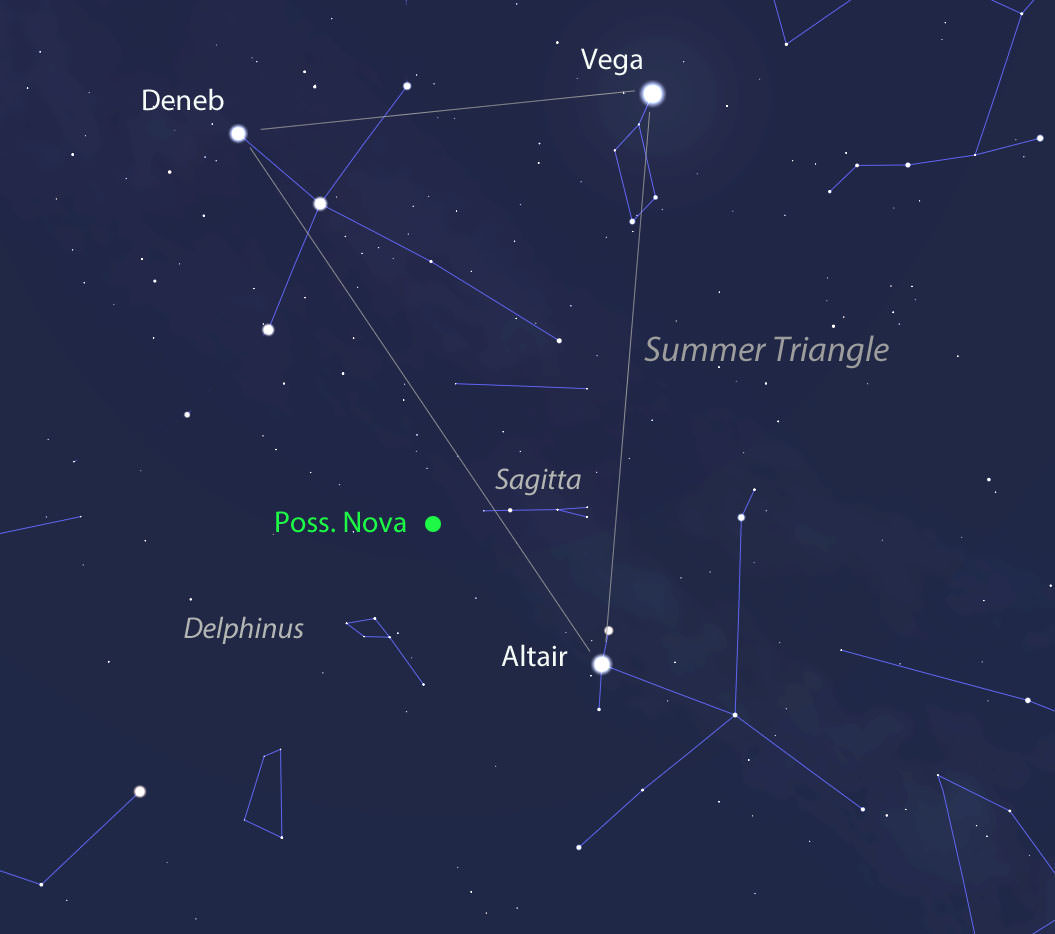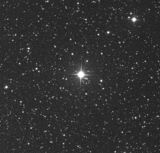Looking around for something new to see in your binoculars or telescope tonight? How about an object whose name literally means “new”. Japanese amateur astronomer Koichi Itagaki of Yamagata discovered an apparent nova or “new star” in the constellation Delphinus the Dolphin just today, August 14. He used a small 7-inch (.18-m) reflecting telescope and CCD camera to nab it. Let’s hope its mouthful of a temporary designation, PNVJ20233073+2046041, is soon changed to Nova Delphini 2013!

Several hours later it was confirmed as a new object shining at magnitude 6.8 just under the naked eye limit. This is bright especially considering that nothing was visible at the location down to a dim 13th magnitude only a day before discovery. How bright it will get is hard to know yet, but variable star observer Patrick Schmeer of Germany got his eyes on it this evening and estimated the new object at magnitude 6.0. That not only puts it within easy reach of all binoculars but right at the naked eye limit for observers under dark skies. Wow! Since it appears to have been discovered on day one of the outburst, my hunch is that it will brighten even further.
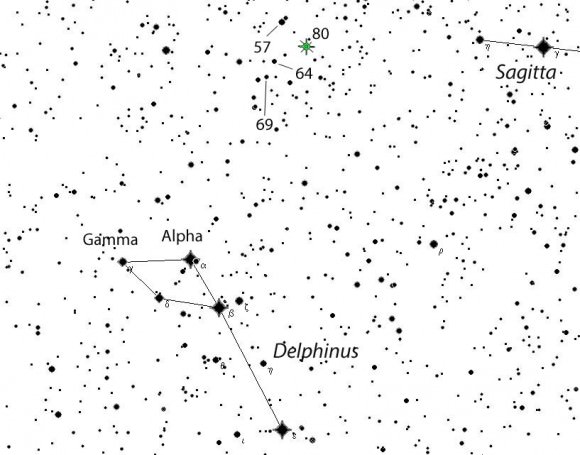
The only way to know is to go out for a look. I’ve prepared a couple charts you can use to help you find and follow our new guest. The charts show stars down to about 9th magnitude, the limit for 50mm binoculars under dark skies. The numbers on the chart are magnitudes (with decimals omitted, thus 80 = 8.0 magnitude) so you can approximate its brightness and follow the ups and downs of the star’s behavior in the coming nights.
Despite the name, a nova is not truly new but an explosion on a star otherwise too faint for anyone to have noticed. A nova occurs in a close binary star system, where a small but extremely dense and massive (for its size) white dwarf grabs hydrogen gas from its closely orbiting companion. After swirling about in a disk around the dwarf, it’s funneled down to the star’s 150,000 degree F surface where gravity compacts and heats the gas until it detonates like a bazillion thermonuclear bombs. Suddenly, a faint star that wasn’t on anyone’s radar vaults a dozen magnitudes to become a standout “new star”.
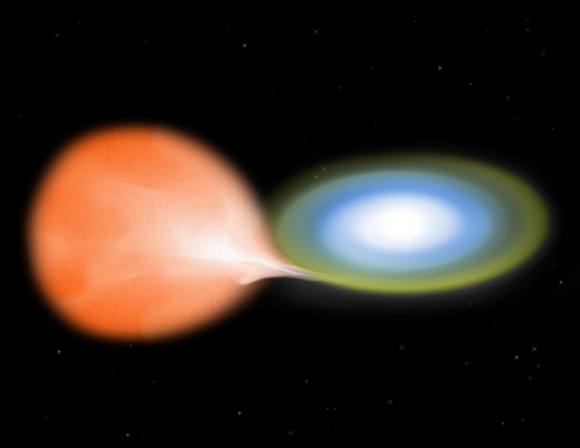
Novae can rise in brightness from 7 to 16 magnitudes, the equivalent of 50,000 to 100,000 times brighter than the sun, in just a few days. Meanwhile the gas they expel in the blast travels away from the binary at up to 2,000 miles per second. This one big boom! Unlike a supernova explosion, the star survives, perhaps to “go nova” again someday.
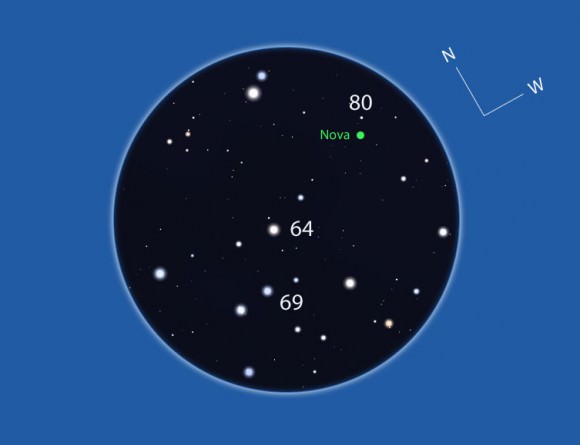
I’ll update with links to other charts in the coming day or two, so check back.
See info on the Remanzacco Observatory website about their followup images of the nova.

